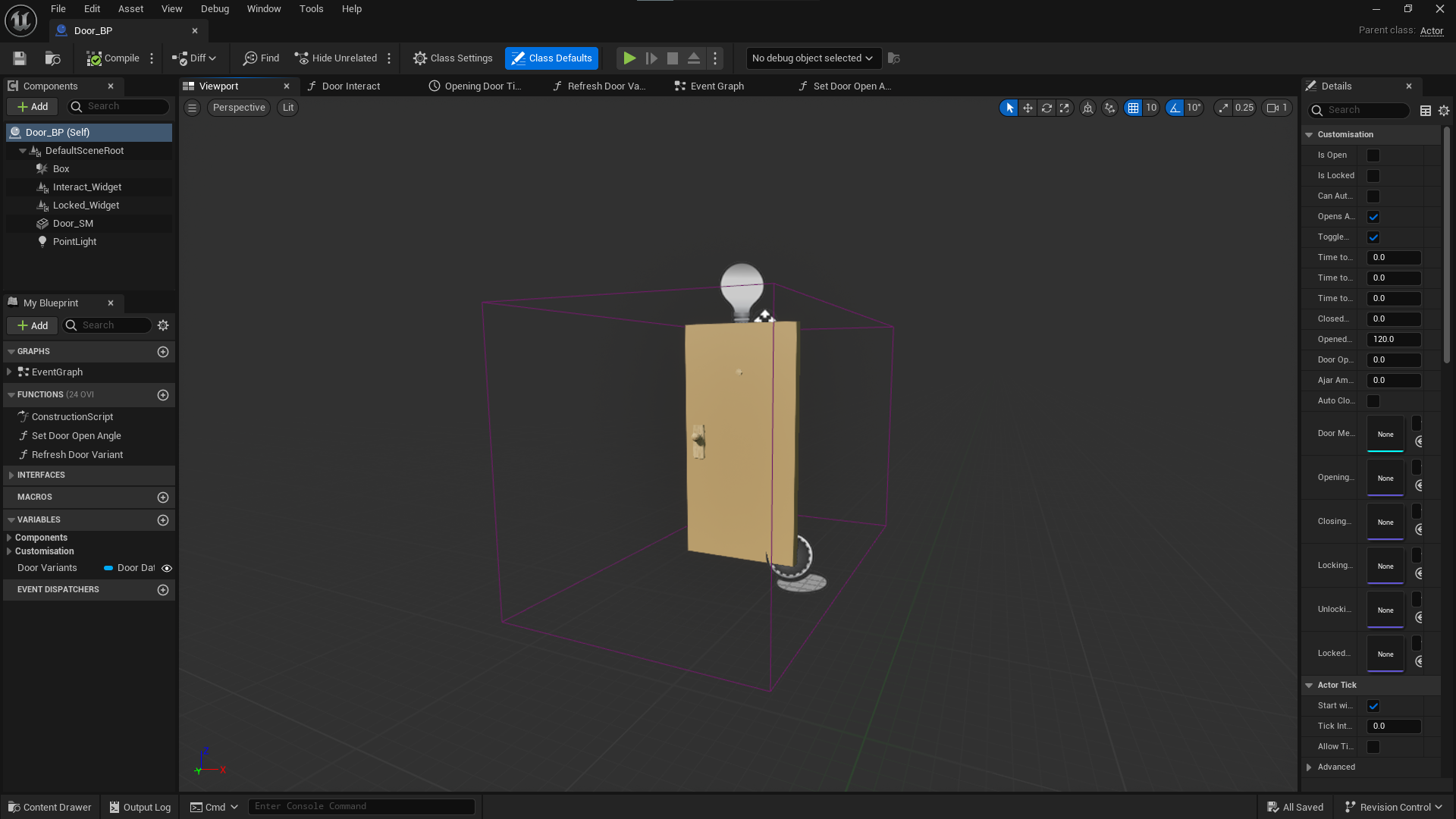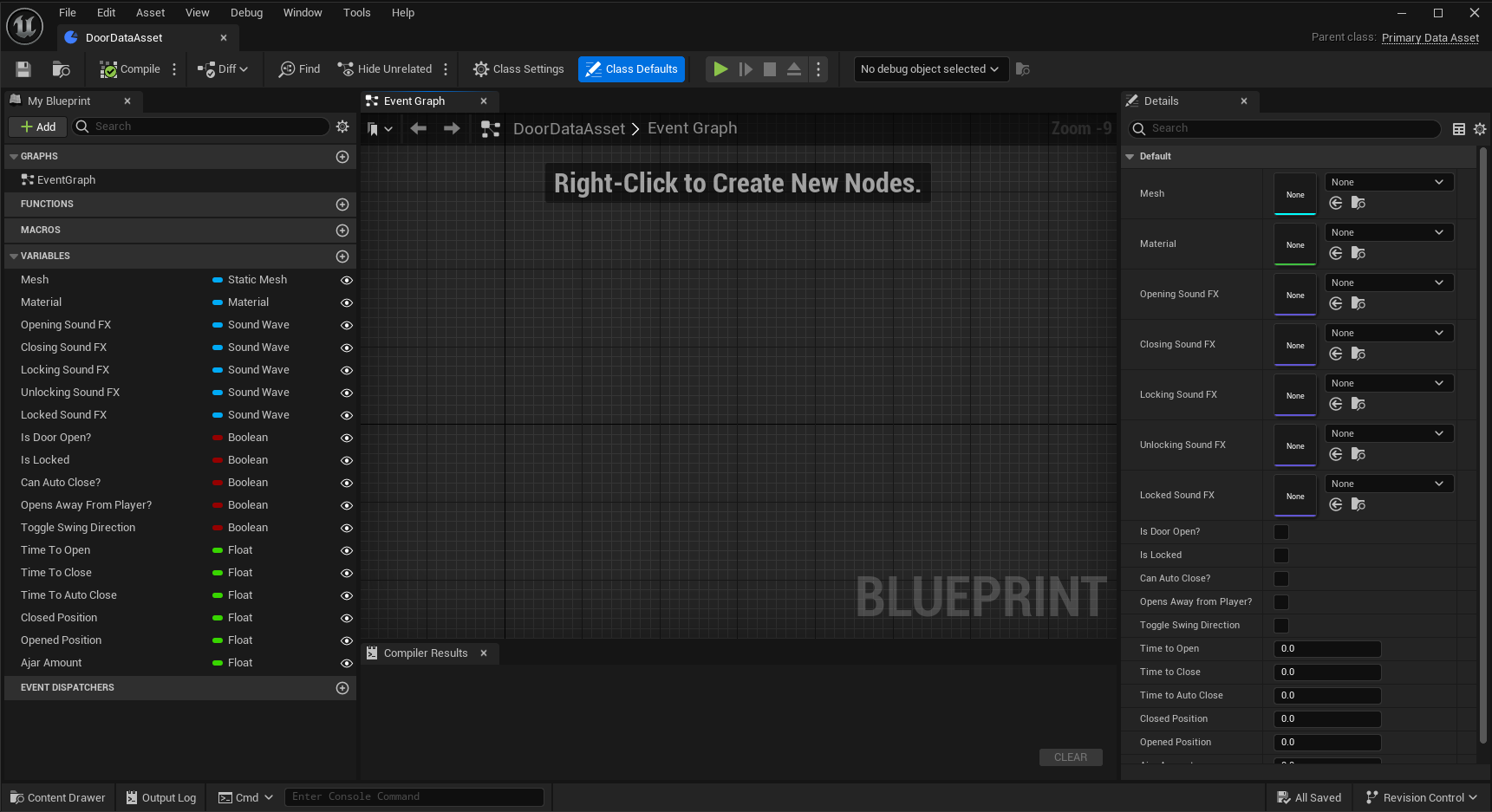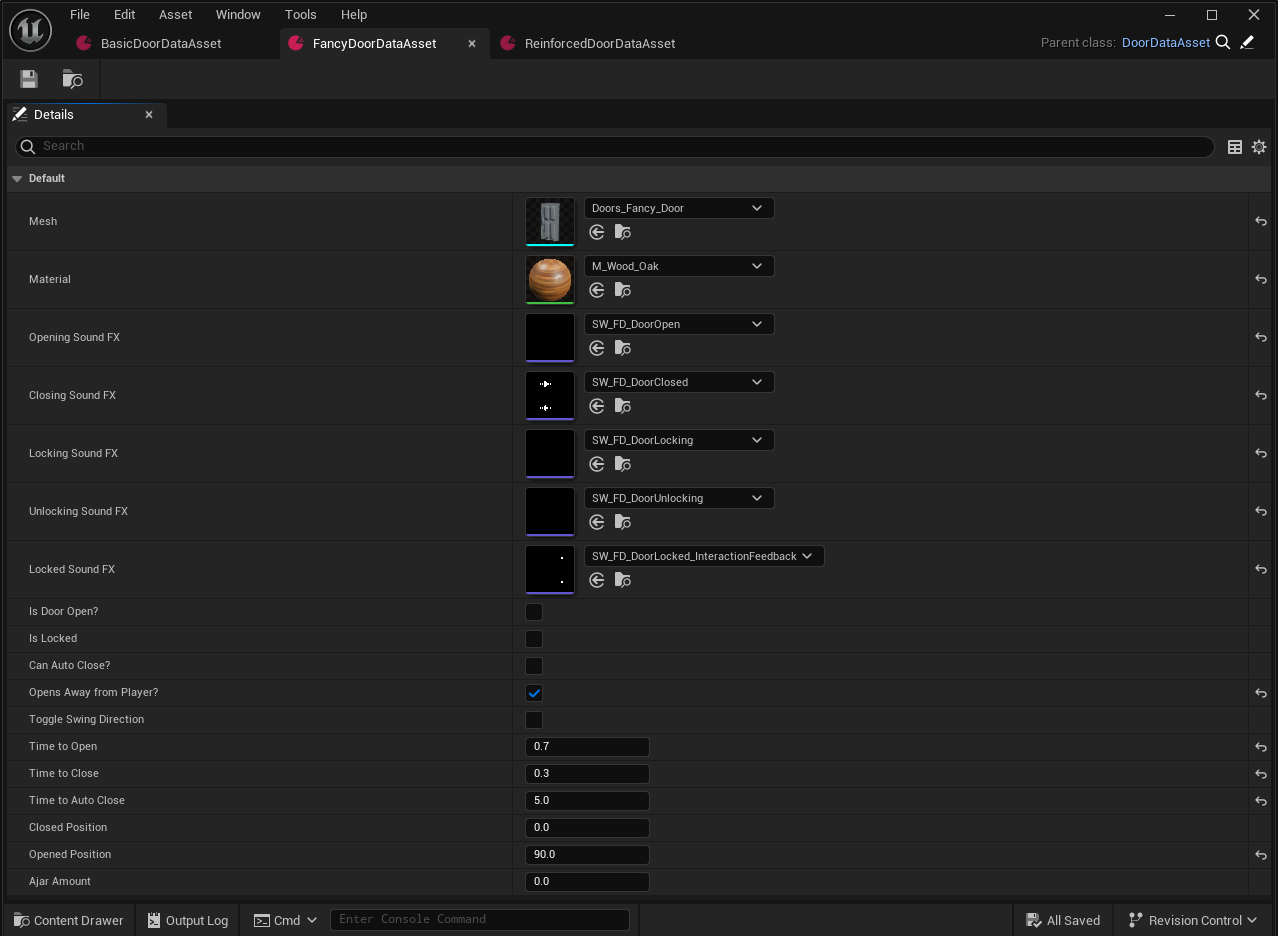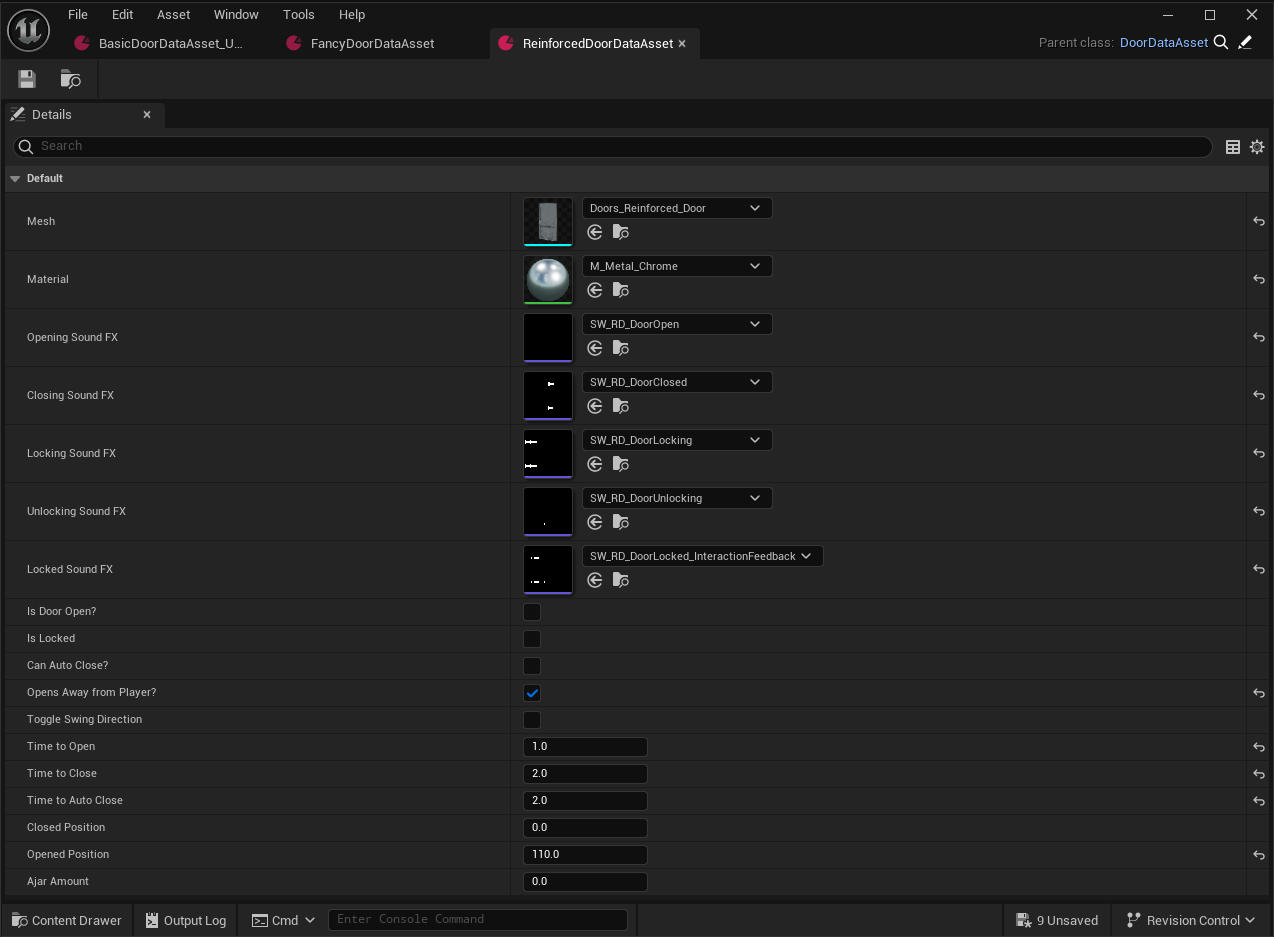Doors Technical Design
I took part in the Into Games Technical Design Sprint in May 2024. The 3 week sprint was lead by Yasmin Curren, an experienced technical designer in the UK games industry. With her guidance, I created a prototype for a Door Design with Blueprints in Unreal Engine. The course reinforced my knowledge in visual scripting with Blueprints, and I learned about best practices for intepreting, editing and writing technical documentation during the game development process within a professional pipeline.
Video of Prototype:
This video demonstrates the basic functionality that needed to be met from a design document supplied by Yasmin. In these documents are design features that are Musts, Shoulds and Coulds. For the purposes of the course I focused on developing Musts and Shoulds. The hypothetical game designer needed to door to do the following:
- Toggle between Opened and Closed states.
- Doors can have their mesh, sound effects, textures and animation changed in editor without changing the Actor.
- Doors should be able to swing both ways to give Designers control on whether they should swing away from the player or be fixed to swing in another direction.
- Doors can be set to close automatically after a set duration.
- Speed of the door opening and closing can be easily edited.
- Doors show a clear interaction point when the player is close enough
- Doors can be locked and unlocked by items or game events.
- Doors can start ajar in the scene before a player interacts with it.
I chose to implement these features with Blueprint Interfaces and Data Assets in Unreal. The course also introduced working with Data Tables and Parent-Child hierarchies to create our prototypes, but I chose Data Assets because they tend to scale more efficiently, and create a discrete interface for other team members to add variants without having to edit any Blueprints directly.
Blueprints:









